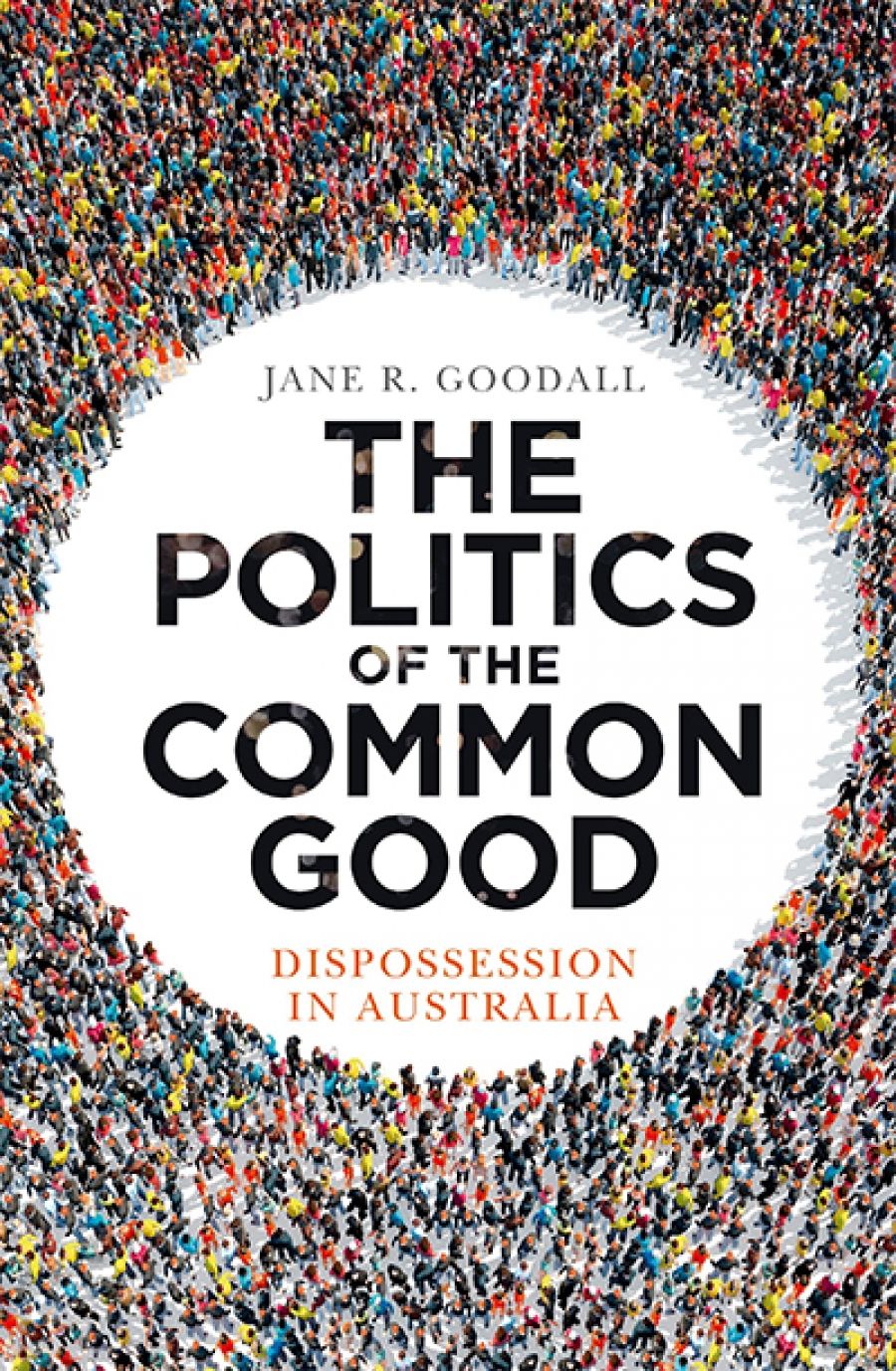
- Free Article: No
- Contents Category: Politics
- Review Article: Yes
- Featured Image (400px * 250px):

- Alt Tag (Featured Image): Gun Control
- Book 1 Title: The Politics of the Common Good
- Book 1 Subtitle: Dispossession in Australia
- Book 1 Biblio: NewSouth, $32.99 pb, 304 pp, 9781742236018
In Goodall’s account, the neoliberal assault on the common good started with Friedrich Hayek’s The Road to Serfdom, published in 1944 in the shadow of two totalitarian regimes, one collapsing, the other consolidating its power. Hayek championed individual liberty operating through markets against collectivism, which he believed led inevitably to socialist dictatorships. A few years later, he established the Mont Pelerin Society to convince political élites and the wider public of the superiority of markets to governments in the distribution of the resources. Hayek believed that markets, as systems for coordinating the actions of competitive, self-interested individuals, were more efficient and transparent than top-down government actions and institutions.
 Friedrich Hayek, Professor of Economic Science at the London School of Economics and Political Science, 27th January 1981, the fiftieth Anniversary of his first LSE lecture (photograph via Wikimedia Commons)
Friedrich Hayek, Professor of Economic Science at the London School of Economics and Political Science, 27th January 1981, the fiftieth Anniversary of his first LSE lecture (photograph via Wikimedia Commons)
Hayek’s ideas were marginal until the collapse of faith in Keynesianism in the mid-1970s, when they became an alternative policy framework. Over the next few decades, as the balance between markets and governments shifted in favour of markets, government-owned enterprises like banks, transport, and energy utilities were privatised. The delivery of some government services was contracted out and competitive principles were built into the allocation of resources to others, many in the health and welfare areas. Regulations that constrained private economic activity were weakened to allow easier pursuit of profit. And governments sought ever more novel ways of reducing their expenditure. Since the mid-1980s the institutional cultures of hospitals, schools, universities, public libraries, art galleries, and museums have changed dramatically. The result has been a people increasingly dispossessed of their commons.
Some neoliberal policies were successful, such as the selling of Qantas, but many are now mired in controversy and dysfunction. The Royal Commission into Misconduct in the Banking, Superannuation and Financial Services Industry revealed an astonishing loss of moral compass in once-trusted organisations, much of it easily explained by internal reward systems based on competitive self-interest. The Royal Commission into Aged Care is currently uncovering shocking stories of neglect and of the suffering of frail elderly people in understaffed nursing homes. We have a crisis of homelessness, and repeated annual efficiency dividends are threatening the core capacities of public cultural institutions. All this in a rich country. One of the book’s aims is to remind readers of the recent history of neoliberalism, and Goodall does this admirably. Another is to think about what comes next.
Goodall begins her book with a quote from the Italian communist Antonio Gramsci, writing from a fascist prison in 1930: ‘The crisis consists precisely in the fact that the old is dying and the new cannot be born: in this interregnum a great variety of morbid symptoms appear.’ At this moment when élite faith in neoliberalism is weakening, Goodall wonders if the old order is dying and if we might be on the brink of a radical transformation in our way of life. Certainly much seems to be unravelling, and a progressive way ahead is not clear. This is the impulse for Goodall’s resurrection of ideas and cooperative practices aimed at advancing the common good.
The book discusses an eclectic mix of these, but I did not find them very convincing. They are small scale and local, like the New South Wales village of Gundaroo, which has a strong sense of its history and has continued to manage its essential infrastructure through Crown Reserve Trusts and locally incorporated bodies. When Goodall writes about people’s need for more meaningful work, her touchstone is William Morris and his celebration of artisan craft. It is always easier to diagnose problems than to solve them, but as the book proceeds the early focus on neoliberalism is lost and corporations, the corporate sector, and corporate interests are more frequently cited as the attackers of common interests. Just what these are is never clear, nor whether they are the same as business interests, or something different. I suspect they are different, but I would have liked more precision.
Romaldo Giurgola, who won the design competition for Australia’s new parliament house, set it into Capitol Hill rather than situating it on top. The latter, he said, would have symbolised a government imposed on the people. Instead, the roof of the building was covered with a wide expanse of publicly accessible lawn where people could walk and sit on top of the politicians. Much of this is now enclosed in high security fences, to protect the parliament from terrorist attacks and, one suspects, from disruptive public protests. It shows, writes Goodall, that government respect for public ownership and public rights is at an all-time low. Hence the timeliness of reviving the idea of the commons, especially in a country that calls itself the Commonwealth of Australia.


Comments powered by CComment